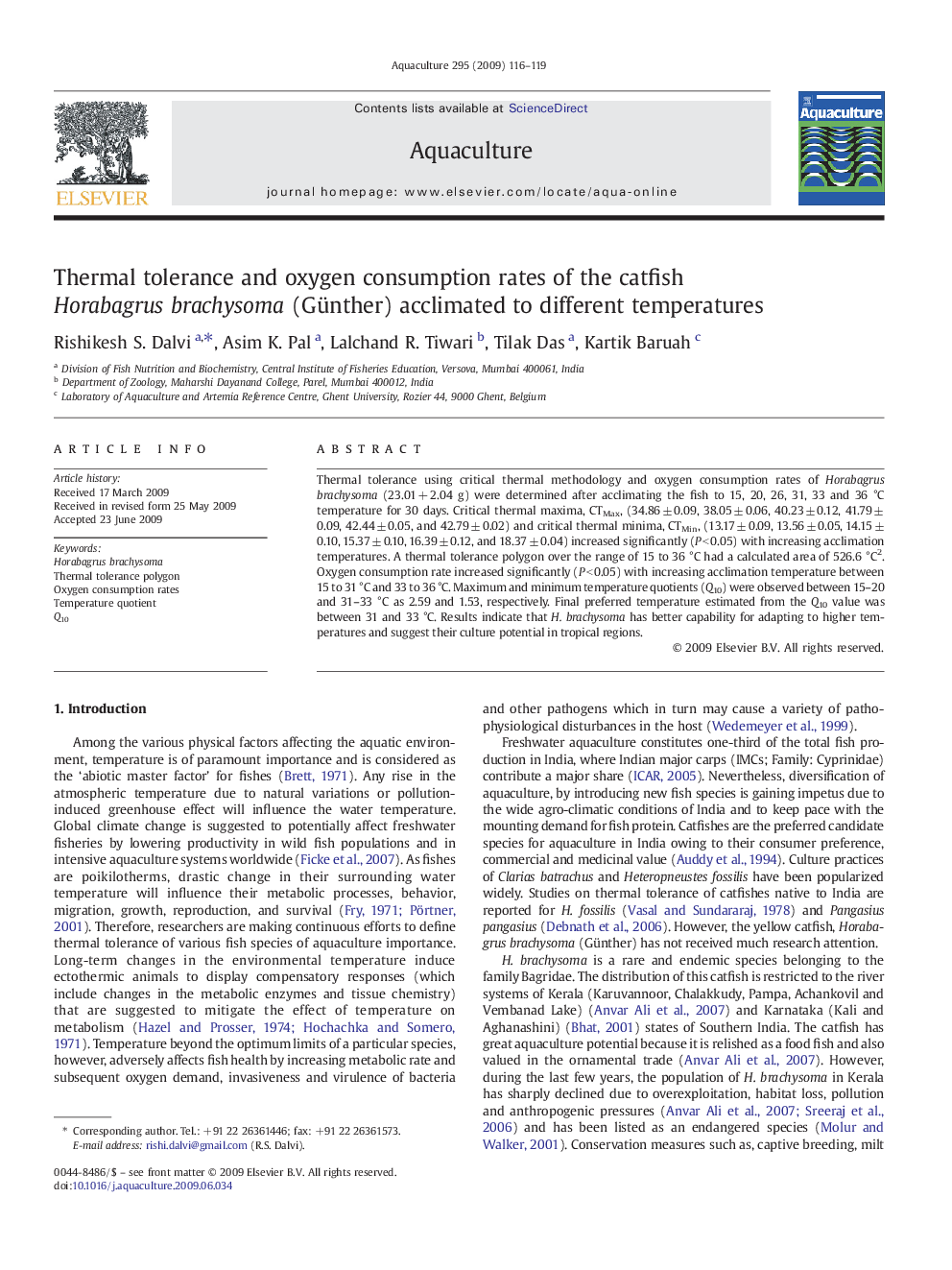| Article ID | Journal | Published Year | Pages | File Type |
|---|---|---|---|---|
| 2424083 | Aquaculture | 2009 | 4 Pages |
Thermal tolerance using critical thermal methodology and oxygen consumption rates of Horabagrus brachysoma (23.01 + 2.04 g) were determined after acclimating the fish to 15, 20, 26, 31, 33 and 36 °C temperature for 30 days. Critical thermal maxima, CTMax, (34.86 ± 0.09, 38.05 ± 0.06, 40.23 ± 0.12, 41.79 ±0.09, 42.44 ± 0.05, and 42.79 ± 0.02) and critical thermal minima, CTMin, (13.17 ± 0.09, 13.56 ± 0.05, 14.15 ±0.10, 15.37 ± 0.10, 16.39 ± 0.12, and 18.37 ± 0.04) increased significantly (P < 0.05) with increasing acclimation temperatures. A thermal tolerance polygon over the range of 15 to 36 °C had a calculated area of 526.6 °C2. Oxygen consumption rate increased significantly (P < 0.05) with increasing acclimation temperature between 15 to 31 °C and 33 to 36 °C. Maximum and minimum temperature quotients (Q10) were observed between 15–20 and 31–33 °C as 2.59 and 1.53, respectively. Final preferred temperature estimated from the Q10 value was between 31 and 33 °C. Results indicate that H. brachysoma has better capability for adapting to higher temperatures and suggest their culture potential in tropical regions.
